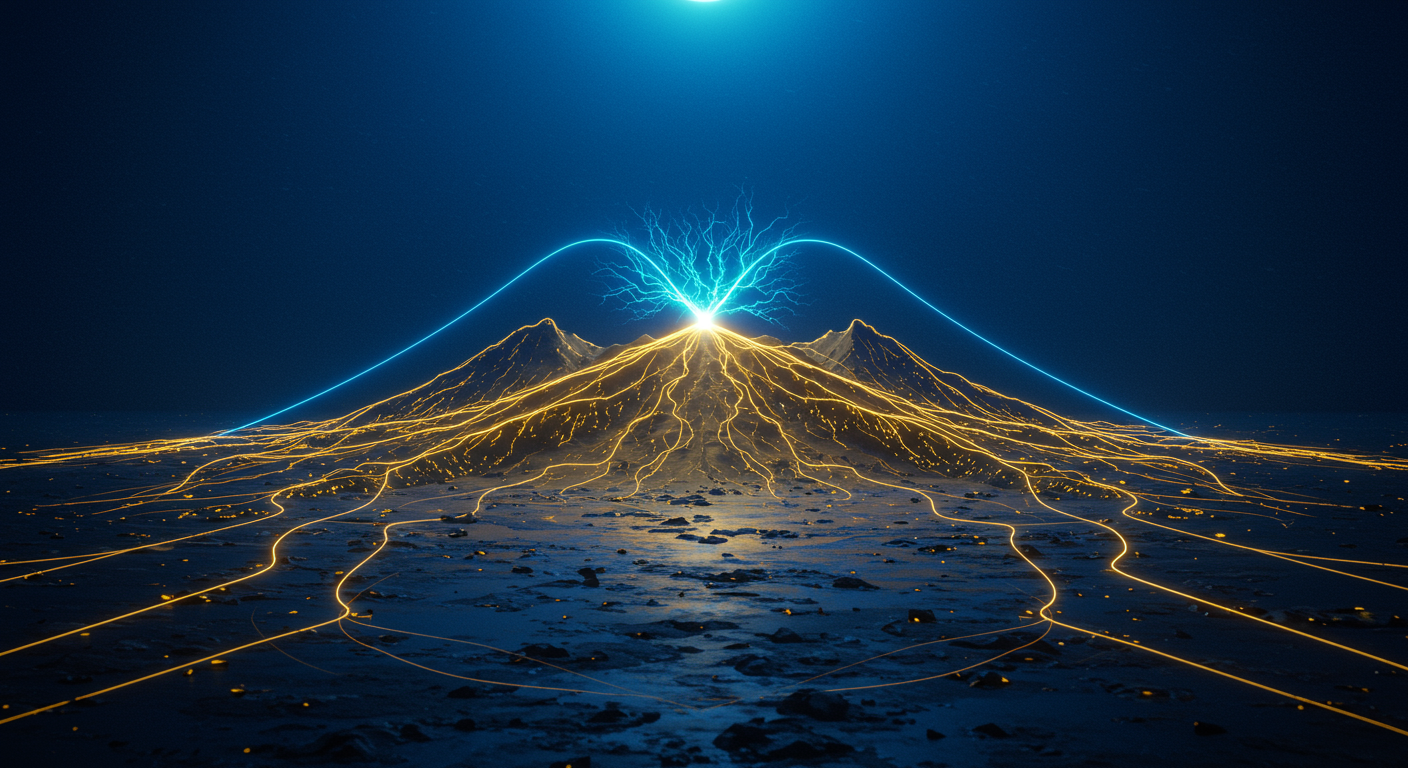Solar Geoengineering: Navigating the Promise and Peril of Climate Intervention

Harnessing the power of the sun to combat climate change may sound like science fiction, but Solar Radiation Management (SRM) is a concept gaining traction.
Understanding Solar Geoengineering: A Primer
Solar geoengineering, also known as solar radiation management (SRM), refers to a set of technologies that aim to reflect sunlight back into space, thereby cooling the planet. It's crucial to understand the underlying science:
- Reflecting Sunlight: The core principle involves increasing Earth's albedo, the measure of how much sunlight is reflected back into space. More reflection means less solar energy is absorbed, leading to a cooler planet. Think of it like putting a giant sunshade in space.
- Not Carbon Dioxide Removal: SRM is fundamentally different from Carbon Dioxide Removal (CDR). While CDR aims to address the root cause of climate change by removing greenhouse gases from the atmosphere, SRM only addresses the symptoms by managing solar radiation.
Potential Benefits and Methods
The primary benefit of SRM benefits is the potential for rapid cooling and mitigating the most severe impacts of climate change, like extreme weather events and sea-level rise. Different methods are being explored:
- Stratospheric Aerosol Injection (SAI): This involves injecting aerosols, like sulfate particles, into the stratosphere to mimic the cooling effect of volcanic eruptions.
- Marine Cloud Brightening (MCB): This aims to increase the reflectivity of low-lying marine clouds by spraying seawater into the air.
- Space-based Reflectors: This more futuristic approach involves deploying reflectors in space to deflect sunlight.
In essence, SRM presents a suite of tools with the capacity to alter our planet's energy balance. The next step? Deeply considering the risks and rewards.
Here's how the solar geoengineering 'race' is shaping up and who's involved.
The Solar Geoengineering 'Race': Actors and Motivations
While not a formal race, the urgency surrounding climate change is fueling a flurry of activity in solar geoengineering research. So, who are the key players, and what motivates them?
Key Actors
- Governments: Nations most vulnerable to climate change impacts are exploring solar geoengineering as a potential emergency measure.
- Private Companies: Startups are emerging, often driven by technological optimism. They view solar geoengineering as a business opportunity to develop and deploy related technologies.
- Academic Institutions: Universities are crucial for conducting fundamental research, assessing risks, and developing governance frameworks. For example, institutions are working to understand aerosol dispersion.
Motivations
- Climate Change Urgency: Facing increasingly severe climate impacts, some see solar geoengineering as a necessary, albeit risky, option.
- Technological Optimism: A belief that technology can solve climate problems, coupled with the potential for economic gain, drives private sector involvement.
- Geopolitical Considerations: Concerns that other nations might unilaterally deploy solar geoengineering are prompting some countries to invest in research for strategic reasons.
Funding and Transparency
- Funding Landscape: Investment in solar geoengineering is still relatively small but growing. It comes from a mix of government grants, philanthropic organizations, and venture capital.
- Transparency Issues: Concerns exist about the lack of transparency surrounding early-stage research and the potential for conflicts of interest. Clear governance frameworks are needed to ensure responsible development. Best AI Tools Directory can assist with this.
One radical approach to mitigating climate change involves manipulating the Earth's radiative balance directly through solar geoengineering.
Stratospheric Aerosol Injection (SAI): Science, Risks, and Ethical Considerations
Stratospheric Aerosol Injection (SAI) proposes injecting aerosols into the stratosphere to reflect sunlight back into space, thereby cooling the planet. This concept mimics the effects of volcanic eruptions, which have been observed to cause temporary global cooling. Potential materials for SAI include sulfur dioxide (SO2), known for its reflective properties, and calcium carbonate (CaCO3) aerosols, considered for their lower ozone depletion potential.
Climate Effects
The potential climate effects of SAI are complex and could include regional variations in temperature and changes in precipitation patterns. For example, while SAI might lower average global temperatures, some regions could experience altered monsoon seasons or increased drought risk. Understanding these regional impacts is crucial for assessing the overall effectiveness and equity of SAI.
Potential Risks
SAI also presents several potential risks.
- Ozone Depletion: SO2 aerosols could exacerbate ozone depletion, particularly in polar regions.
- Ecological Disruption: Altered precipitation patterns and sunlight levels could disrupt ecosystems, potentially leading to biodiversity loss.
- Unforeseen Consequences: The complexity of the climate system means there's a risk of unforeseen and potentially harmful consequences.
Ethical Concerns

Ethical considerations surrounding SAI are significant.
- Moral Hazard: There is concern that SAI could reduce the impetus to mitigate greenhouse gas emissions, creating a moral hazard.
- Global Governance: Questions arise about who decides when and how SAI is deployed, and how to manage potential international disputes.
- Environmental Justice: Unevenly distributed climate effects raise concerns about environmental justice, as some regions could bear a disproportionate burden of SAI's negative impacts.
SAI represents a high-stakes gamble with potentially far-reaching consequences, demanding careful consideration of its science, risks, and ethical dimensions. Moving forward, transparent and inclusive dialogue is essential to ensure that SAI – or any solar geoengineering method – is considered with the utmost caution and responsibility.
Navigating the complexities of solar geoengineering requires looking beyond single solutions.
Marine Cloud Brightening (MCB)
MCB aims to increase the reflectivity of marine clouds by spraying seawater, creating more cloud condensation nuclei. This enhances the cloud's albedo, reflecting more sunlight back into space.- Feasibility: Relatively low-cost and technologically simple compared to other geoengineering techniques.
- Environmental Impact: Potential disruptions to regional weather patterns and marine ecosystems raise concerns.
- For example, think of it like adding tiny mirrors to the sky, as explored in a recent AI News article about climate tech.
Space-Based Solar Reflectors
This ambitious approach involves deploying mirrors or lenses in space to deflect sunlight before it reaches Earth.- Technological Challenges: Enormous engineering hurdles exist in terms of material science, deployment logistics, and long-term maintenance.
- Cost Considerations: Prohibitively expensive due to the complexities of space missions and the scale of deployment required.
- Potential Effectiveness: Could offer a more uniform reduction in solar radiation globally.
Other Emerging Techniques
Several other solar geoengineering methods are under investigation, each with unique characteristics:- Cirrus Cloud Thinning: Aimed at reducing the warming effect of cirrus clouds by seeding them to reduce their density.
- High-Albedo Crops and Surfaces: Modifying agricultural practices and urban surfaces to increase their reflectivity.
Different solar geoengineering techniques offer varying degrees of scalability. MCB, for instance, could be deployed regionally, while space-based reflectors would have global implications. Cirrus cloud thinning requires careful understanding of cloud dynamics to avoid unintended consequences.
Ultimately, a diversified approach, considering a range of techniques and their impacts, will be critical for responsible climate intervention.
The Simpsons Did It? Solar Geoengineering in Popular Culture
Did you know that solar geoengineering – the idea of intentionally manipulating the Earth's climate to offset the effects of global warming – has popped up in popular culture? It's true, and these portrayals, however fictionalized, play a significant role in shaping public perception of this complex technology.
From Springfield to Your Screen
The animated series The Simpsons is just one example, often credited with "predicting the future". But what influence do these portrayals really have?- Raising Awareness: Fictional depictions introduce the concept to a broad audience who might otherwise be unaware.
- Shaping Opinions: The tone of these portrayals – optimistic, cautionary, or outright dystopian – influences how the public views the technology.
- Sparking Debate: By presenting scenarios, even outlandish ones, popular culture can spark discussions about the ethics and societal implications.
Exploring Ethical Implications
Science fiction offers a unique playground for exploring the "what ifs" of solar geoengineering. By taking the science and extrapolating it into the realm of fiction, these stories let us grapple with the potential consequences – both intended and unintended. This includes:- Environmental impacts
- Geopolitical tensions
- Moral hazards
While no AI tool can definitively predict the future, staying informed on trends and perceptions can be a useful starting point. Check out AI News to learn more.
The potential of solar geoengineering hinges on establishing robust and equitable governance frameworks.
The Governance Vacuum
Currently, there are no internationally binding agreements specifically governing solar geoengineering research or deployment. This absence creates uncertainty and raises concerns about unilateral actions. Without a formal framework, the risk of uncoordinated, potentially harmful experiments increases dramatically. We need clarity and guardrails, pronto."The lack of a global governance framework presents a significant challenge to the responsible development of solar geoengineering."
Governance Models: A Menu of Options
Several governance models are being considered:- Multilateral Agreements: International treaties involving many nations. These offer broad legitimacy but are notoriously difficult to negotiate and enforce, a problem that existing Legal frameworks also face.
- National Regulations: Individual countries establishing their own rules. This allows for tailored approaches but risks a fragmented landscape.
- Self-Regulation: Scientists and engineers adopting voluntary guidelines. While valuable, self-regulation alone may lack sufficient accountability. Consider the Ethical AI approaches being developed, but these are no replacement for policy.
Challenges and the Way Forward
Achieving global consensus on solar geoengineering governance is a Herculean task. Differing national interests, ethical perspectives, and scientific uncertainties all complicate the process. Moving forward requires:- Transparency: Openly sharing research findings and decision-making processes.
- Public Engagement: Involving citizens in discussions about the risks and benefits.
- Independent Oversight: Establishing impartial bodies to monitor and evaluate activities.
- International Cooperation: Leveraging organizations like the UN and IPCC to foster dialogue and coordination. You can find more information on these concepts in the AI Glossary.
While the future of our planet hangs in the balance, solar geoengineering stands as both a beacon of hope and a cause for concern.
Research Priorities
Key research areas must be explored to safely develop solar geoengineering.- Climate Modeling: Refining climate models to more accurately predict the regional impacts of solar geoengineering is paramount.
- Aerosol Chemistry: Further research into the atmospheric chemistry of aerosols, like sulfates, and exploring alternatives is essential. We must fully understand their potential impact on ozone depletion and cloud formation.
- Impact Assessment: Comprehensive studies are needed to assess the socio-economic and environmental consequences across various regions and populations.
Deployment Scenarios
Deployment scenarios vary greatly depending on need and global cooperation.- Emergency Response: A rapid deployment to counteract a sudden, severe climate event.
- Gradual Implementation: A slow and steady increase in solar geoengineering to manage long-term warming trends.
- Regional Deployment: Targeted interventions to address specific regional climate challenges, such as glacial melt or drought.
Long-Term Implications

Solar geoengineering raises complex questions about climate policy and sustainable development. It is crucial to remember that Solar geoengineering research priorities could impact our future, so research must emphasize long-term sustainability.
- Climate Policy: Solar geoengineering cannot replace emissions reduction; it's a supplementary tool.
- Sustainable Development: Its deployment must align with sustainable development goals, addressing societal inequalities and environmental protection.
Keywords
solar geoengineering, climate intervention, solar radiation management, SRM, stratospheric aerosol injection, SAI, marine cloud brightening, MCB, geoengineering governance, climate change, The Simpsons geoengineering, geoengineering ethics, carbon dioxide removal, climate modeling, geoengineering risks
Hashtags
#SolarGeoengineering #ClimateIntervention #Geoengineering #ClimateChange #SRM
Recommended AI tools
ChatGPT
Conversational AI
AI research, productivity, and conversation—smarter thinking, deeper insights.
Sora
Video Generation
Create stunning, realistic videos and audio from text, images, or video—remix and collaborate with Sora, OpenAI’s advanced generative video app.
Google Gemini
Conversational AI
Your everyday Google AI assistant for creativity, research, and productivity
Perplexity
Search & Discovery
Clear answers from reliable sources, powered by AI.
DeepSeek
Conversational AI
Efficient open-weight AI models for advanced reasoning and research
Freepik AI Image Generator
Image Generation
Generate on-brand AI images from text, sketches, or photos—fast, realistic, and ready for commercial use.
About the Author

Written by
Dr. William Bobos
Dr. William Bobos (known as 'Dr. Bob') is a long-time AI expert focused on practical evaluations of AI tools and frameworks. He frequently tests new releases, reads academic papers, and tracks industry news to translate breakthroughs into real-world use. At Best AI Tools, he curates clear, actionable insights for builders, researchers, and decision-makers.
More from Dr.

